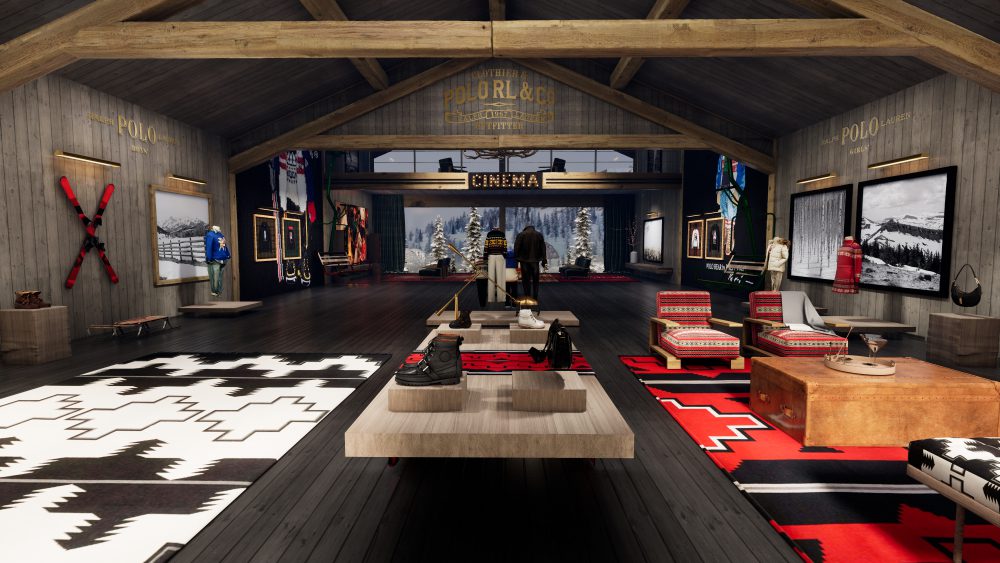Summary
A New York icon for nearly 150 years, Bloomingdale’s is America’s only nationwide, full-line, upscale department store and a division of Macy’s Inc. Currently it operates 37 department stores and Bloomingdale’s “The Outlet” stores in 13 states as well as Bloomingdales.com. Bloomingdale’s also has an international presence in Dubai. And although Bloomingdale’s is part of a Fortune 100 Corporation, the company holds on to the family values of founding brothers Joseph and Lyman Bloomingdale.
History
1872, New York. “A Store Is Born.” To think it all started with a 19th century fad – the hoop skirt. That was the first item that Joseph and Lyman Bloomingdale carried in their Ladies’ Notions Shop in New York’s Lower East Side. In the late 1800’s, most fashion retailers specialised in just one type of garment. Not the brothers Bloomingdale – their East Side Bazaar, opened in 1872, sold a wide variety of European fashions. It was the beginning of what would become a “Department Store”.
In 1886 came the visionary move uptown to 59th Street and Lexington Avenue. The store expanded steadily and by the 1920’s, Bloomingdale’s converted an entire city block. Flexing his marketing muscle, Lyman created splashy campaigns to bring people in the door. People started seeing the “All Cars Transfer to Bloomingdale’s” slogan everywhere – on billboards, delivery wagons, and even ladies’ beach umbrellas. In the 1940’s Print ads couldn’t say it all. The store had to be experienced. So Bloomingdale’s became the stage for gala events and fashion shows, including “Woman Of The Year, 1947.” With music, lighting and sophistication, it was retailing as theater.
Per WWD: “Bloomingdale’s longevity and success stems from a culture of merchandising innovation and fashion risk-taking, a sense of theater, cautious expansion, an eclectic upscale assortment ranging from accessible to luxury, and continuity of management and ownership. In the last 50 years, there have been only three CEOs, and the retailer has had only three owners in its 150 years in business.”
Sixties saw the luxury shopping mall evolve. Focusing on the mantra, “It’s not just what you buy – it’s what you take it home in, too,” in 1961, the Bloomingdale’s team came up with the first designer shopping bags. Since then, many have become collector’s items. By the following decade, it was not a store, Bloomingdale’s was a destination; everyone was stopping by 59th Street and Lexington Avenue for a look, including the late Queen Elizabeth. People came to see and to be seen. Once there, they were dazzled by the cutting-edge fashion of designers like Ralph Lauren, Perry Ellis and Norma Kamali, who got their first truly big opportunities at Bloomingdale’s.
In 1994, Bloomingdale’s, which was a division of the Cincinnati-based Federated Department Stores, underwent major structural changes. The Macy’s department store chain joined the Federated Department Stores holding company. In 2007, Federated Department Stores was renamed Macy’s, Inc. As of October 29, 2022, there are 54 stores including 32 department stores, 1 Bloomies, 1 furniture store and 20 outlet stores with the Bloomingdale’s nameplate in operation throughout the United States. Its headquarters and flagship store are located at 59th Street and Lexington Avenue in the New York City borough of Manhattan.
Today, Bloomingdale’s is committed to once again lead the way with exclusive merchandise, customised services, and alternative shopping venues. The company operate 33 stores and 19 outlets across the country, an outpost in Dubai, as well as bloomingdales.com. Carrying on the Bloomingdale’s brothers’ dream, the team is always finding ways to set its stores apart. That’s both the legacy and the promise of Bloomingdale’s, seen in the recent launch of its virtual shopping mall.
Vision
Department store Bloomingdale’s envisioned a culture of merchandising creativity and risk-taking in fashion, theater-style retail, calculated expansion, an eclectic upscale assortment of products ranging and continuity of management and ownership.
Bloomingdale’s vision is to be a leader in the luxury retail space by offering a curated selection of premium products and delivering an exceptional customer experience. The department store is dedicated to providing its customers with a combination of high fashion, innovative brands, and exclusive collaborations, all while fostering a sense of discovery and style.
Bloomingdale’s aims to create an immersive shopping environment, both in-store and online, where customers can explore the latest trends, experience personalized services, and enjoy a unique, sophisticated retail journey. Their vision is centered on maintaining a strong connection with fashion-forward consumers and continuously evolving to meet their changing needs.
Mission Statement
Bloomingdale’s mission is to offer a distinctive and high-quality shopping experience by curating a selection of luxury fashion, accessories, and home goods that cater to a diverse range of sophisticated tastes. The brand is committed to bringing the best in fashion by offering a mix of established designer labels and emerging brands, ensuring customers have access to exclusive and trend-forward products. This dedication to curation extends beyond products, as Bloomingdale’s aims to create an environment where customers feel inspired by the latest in fashion and design.
A key aspect of Bloomingdale’s mission is to foster deep, personalized relationships with its customers. Through exceptional customer service, personalized styling, and loyalty programs, Bloomingdale’s strives to build lasting connections that go beyond simple transactions. Whether in-store or online, the brand is dedicated to offering tailored shopping experiences that meet the unique needs and preferences of each customer. By understanding and anticipating customer desires, Bloomingdale’s aims to provide not only products but also an elevated, personalized experience.
Additionally, Bloomingdale’s mission includes a commitment to social responsibility and sustainability. The brand seeks to engage in ethical business practices by promoting diversity, supporting charitable initiatives, and sourcing products from brands that align with its values. Bloomingdale’s also emphasizes sustainability in its operations, working to reduce its environmental impact through mindful sourcing, eco-friendly packaging, and energy-efficient practices. This holistic approach reflects Bloomingdale’s desire to make a positive impact both in the fashion industry and in the communities it serves.
Products and Services
Bloomingdale’s offers an extensive range of high-end products that cater to a sophisticated clientele. Their fashion collections feature designer apparel for men, women, and children, showcasing luxury brands like Gucci, Prada, and Burberry alongside up-and-coming designers. In addition to fashion, Bloomingdale’s provides a curated selection of premium accessories, footwear, beauty products, and home goods, ensuring customers can find everything from cutting-edge fashion trends to timeless, elegant pieces. The mall also emphasises exclusivity by offering limited-edition collections and collaborations with top designers, providing unique pieces that can’t be found elsewhere.
Bloomingdale’s services are designed to enhance the shopping experience through personalized and customer-centric offerings. From personal stylists and beauty consultations to in-store alterations and bespoke gift wrapping, Bloomingdale’s ensures that every customer receives a tailored and seamless experience. Their loyalty program, Loyallist, rewards frequent shoppers with exclusive perks, including early access to sales and special events. Additionally, their online platform offers conveniences like “buy online, pick up in-store” and virtual styling services, ensuring that both in-store and online customers enjoy a high level of service and attention.
Key Team
Oliver Bron, Chairman and Chief Executive Officer
References
- Official website Bloomingdales
- Facebook page of Bloomingdales Facebook
- Through the Years WWD
- Bloomingdales page on Wikipedia Wikipedia
- The New Rules of Brick-and-Mortar Retail BoF
- Twitter page of Bloomingdales Twitter
- GQ x Bloomingdale’s: Spring Travel Style GQ
- Instagram page of Bloomingdales Instagram
- Macy’s, Bloomingdale’s, Nordstrom, Saks Fifth Avenue closing stores because of coronavirus USA Today
- LinkedIn page of Bloomingdales LinkedIn
- Funeral Services Today for E. W. Bloomingdale, Well Known Merchant JTA
- Bloomingdale’s Dubai likely to be only one outside US Arabian Business
- Bloomingdale’s at Mall of America closing; space to be divided Twin Cities
- Youtube page of Bloomingdales Youtube
- Bloomingdales plans cut NY Times
- A new model of shopping malls BoF
- Hawaii’s first Bloomingdale’s to open Biz Journals





